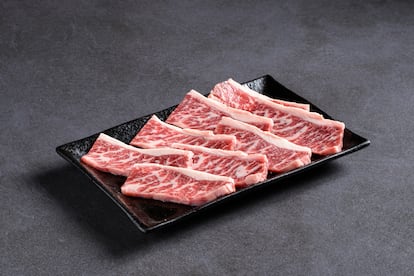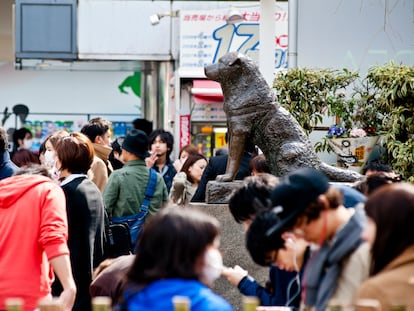Japan rewards diligent taxpayers with Kobe beef and other delicacies
Created in 2008, the ‘hometown tax’ provides revenue to municipalities in underpopulated regions

Since 2008, Japan has had a tax called furusato nozei, which rewards people who pay it with a variety of luxury products. Initiated by Yoshihide Suga, Japan’s former Minister of Internal Affairs and Communications, the so-called “hometown tax” revenue is channeled to specific municipal governments in underpopulated areas of the country. People who donate to this program can select high-priced delicacies like Kobe beef, seasonal vegetables and wild abalone, a highly prized shellfish.
The website for Japan’s Ministry of Internal Affairs and Communications explains the rationale for the hometown tax: “Many people are born in rural areas and grow up in their villages. They receive various services from local governments, such as healthcare and education. Eventually, they move to urban areas for higher education or employment and start paying taxes there. As a result, the urban local governments receive tax revenue from them, while the local governments of their hometowns don’t receive any. Wouldn’t it be nice to have a system where you can choose to pay taxes to the hometown that raised you, even if you now live in a city?”
To address the imbalance between Japan’s urban and rural areas, the furusato nozei asks Japanese citizens to pay a special tax (more like a mandatory donation) to the towns that produce their favorite foods or artisanal goods. In return, citizens get delicacies from those areas directly delivered to their homes. The town selected to receive the furusato nozei payment cannot be the citizen’s current place of residence.
Each municipal government can decide where to allocate the revenue — cleaning up the ocean, road safety for children, elderly care, preserving traditional culture, disaster recovery and more. The Kyōtango City Council in Kyoto Prefecture has an online catalog of products to choose from that includes local craft beer, wagyu sirloin from the Moritaya farm, Nishiri pickled vegetables and canned wild abalone. The website touts its high-quality, artisanal products, offering donors a chance to discover unique items from Kyōtango without leaving the comforts of home.
An individual can select how much to contribute through the furusato nozei system, and the amount deducted is based on a variable percentage of the residence tax. But the deductions are not directly proportional to the amount selected. The donation is subject to a maximum limit, which is determined based on factors like family size and composition, annual income and other relevant deductions. For instance, a single person earning five million yen annually ($33,345) can contribute a maximum of $425. If married, the maximum amount drops to $175, and if a family has children enrolled in college, it drops even further to $35. After making the online payment, the individual can select a return gift for home delivery. “Companies providing gifts must register with the respective local governments. The criteria for accepting certain products vary by region,” said Hanae Yoshida, an economic affairs spokesperson with the Japanese Embassy in Spain. The city of Saitama (central Japan) requires that the goods offered must be a value-added product made within the municipality and have roots there.
The system seems to work. “The results for fiscal year 2021 were around 830.2 billion yen [$5.53 billion], about 1.2 times greater than the previous year,” stated the annual report from the Ministry of Internal Affairs and Communication. Regarding the uses of the revenue, health programs top the list, followed by education and human resource development, child welfare, industrial development, environment, and sanitation.
However, the furusato nozei system also has its critics. Motohiro Sato, a fellow with the Research Institute of Economics, Trade and Industry (RIETI), wrote a paper on the Pros and Cons of the “Hometown Tax” Donation Program, challenging the premise of the program. “To be sure, the program played a significant role in supporting municipalities affected by major disasters such as the Great East Japan Earthquake of 2011 as well as the Kumamoto earthquake and the Itoigawa fire in 2016. However, in ordinary times, municipalities are trying to garner donations by offering generous return gifts, while donor taxpayers typically choose municipalities that offer their preferred return gifts, rather than those to which they want to give support. As such, the hometown tax donation program is more like a government-subsidized mail order business than a donation program.”
Sato argues that the current system encourages unhealthy competition among municipalities. They exploit legal loopholes to offer items like tablets and drones, defeating the original purpose of the tax, which is to foster a donation culture by offering incentives. “By definition, donation is the act of giving money, without expecting anything in return, to help the cause or activity one wishes to support… The hometown tax donation program, as it stands today, could spread the misperception that it is only natural to receive something for making donations, while what the government should be doing is to foster a positive public attitude toward charitable giving.”
Sato also identified some unintended effects of the program. “In some municipalities, the program has had significant influence on business decisions, for instance, prompting a seafood company to set up a new processing plant to respond to a sudden increase in demand for its products, which turned out to be popular return gifts… However, when the boom is over, the seafood company may end up with excess capacity and massive debt.”
Sign up for our weekly newsletter to get more English-language news coverage from EL PAÍS USA Edition
Tu suscripción se está usando en otro dispositivo
¿Quieres añadir otro usuario a tu suscripción?
Si continúas leyendo en este dispositivo, no se podrá leer en el otro.
FlechaTu suscripción se está usando en otro dispositivo y solo puedes acceder a EL PAÍS desde un dispositivo a la vez.
Si quieres compartir tu cuenta, cambia tu suscripción a la modalidad Premium, así podrás añadir otro usuario. Cada uno accederá con su propia cuenta de email, lo que os permitirá personalizar vuestra experiencia en EL PAÍS.
¿Tienes una suscripción de empresa? Accede aquí para contratar más cuentas.
En el caso de no saber quién está usando tu cuenta, te recomendamos cambiar tu contraseña aquí.
Si decides continuar compartiendo tu cuenta, este mensaje se mostrará en tu dispositivo y en el de la otra persona que está usando tu cuenta de forma indefinida, afectando a tu experiencia de lectura. Puedes consultar aquí los términos y condiciones de la suscripción digital.
More information
Últimas noticias
Most viewed
- Reinhard Genzel, Nobel laureate in physics: ‘One-minute videos will never give you the truth’
- Oona Chaplin: ‘I told James Cameron that I was living in a treehouse and starting a permaculture project with a friend’
- Pablo Escobar’s hippos: A serious environmental problem, 40 years on
- Why we lost the habit of sleeping in two segments and how that changed our sense of time
- The fall of a prolific science journal exposes the billion-dollar profits of scientific publishing










































